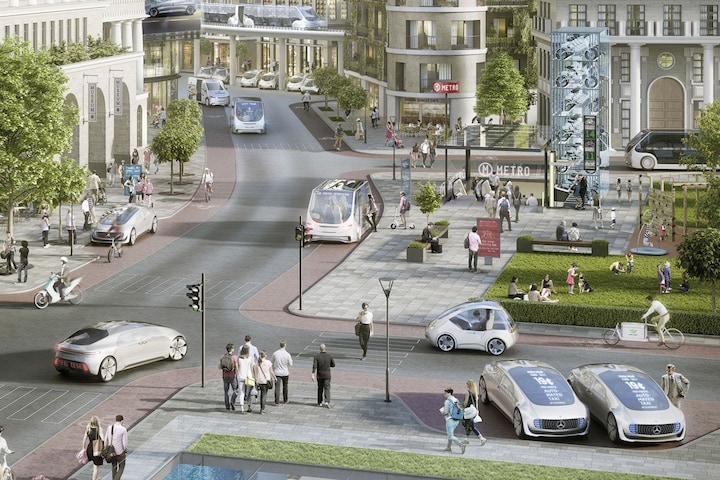Autonomous cars will become an important part of city traffic in the near future. TNO estimates what this will do with the traffic supply. TNO argues that policy must be hatched in order not to overfill cities in particular with cars.
The fact that we have to steer less and less in a car ourselves should eventually lead to better road safety and traffic flow. That’s the idea, at least. However, TNO fears that the arrival of autonomous cars could cause a problem in inner cities. It outlines in a whitepaper following an investigation into this some future situations.
Different scenarios
The worst case scenario is unlimited access for autonomous cars. TNO then foresees a decrease in the use of public transport in favor of car use, the number of car kilometers will then decrease by 74 percent and congestion in cities will triple. Stimulating taxi use and discouraging private use of cars could be the solution to ‘level out’ this increase. For an even greater drop in car mileage and thus possible congestion, car sharing should be encouraged and private taxis discouraged. Car sharing in particular is already a hot topic, but with a potential growth in the number of cars such as these driving autonomously, this may become even more important.
Finally, there is another scenario in which private use of cars is completely prohibited (in inner cities) and there is a lot of focus on car sharing and shared taxis. Then the number of car kilometers could decrease by 88 percent and, moreover, more space will become available in cities that were previously used for parking spaces. Although in the eyes of some this may be an ideal picture, TNO also warns against a decline in government revenues. “Parking income and income from vehicle tax are declining. In current policy, providers of mobility services do not pay for the extent to which they use publicly funded road capacity compared to private car owners. This is an important argument for paying according to use.”

Connected driving
Fully self-driving cars are not necessarily the ideal image of the EU in and of themselves. In Europe, people prefer to see cars that can drive themselves interconnected in order to get through traffic more efficiently. TNO calls this ‘Connected’ automatic driving. Investments are also being made in Europe. Car manufacturers are also responding to this. Most developments in the field of autonomous driving focus on vehicles that not only find their way independently by means of sensors and cameras, but also on the basis of data from other vehicles, be it via direct communication or data from the ‘cloud’.
Send transition
TNO concludes that governments must already look carefully at policy changes in order to be prepared for the arrival of more autonomous cars. “The challenge is to steer the transition in such a way that collective services and ride-sharing systems are offered in the cities and in suburban areas optimal use is made of the new opportunities that come with automated driving and shared taxis. Only through long-term control. with knowledge of technological developments and the social impact of various transition paths, automatic driving can be developed and implemented in such a way that the benefits are maximized and any adverse effects on society are minimized. “